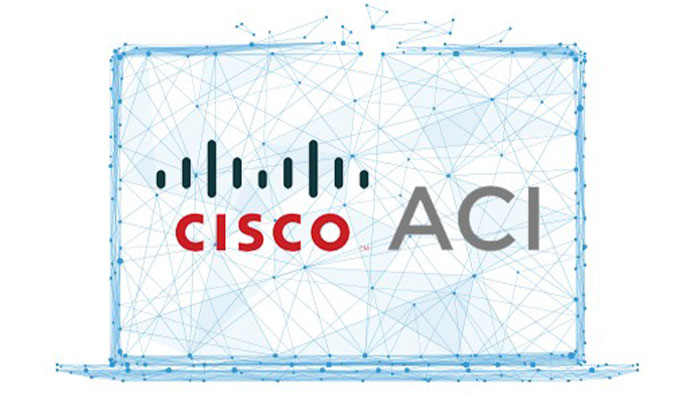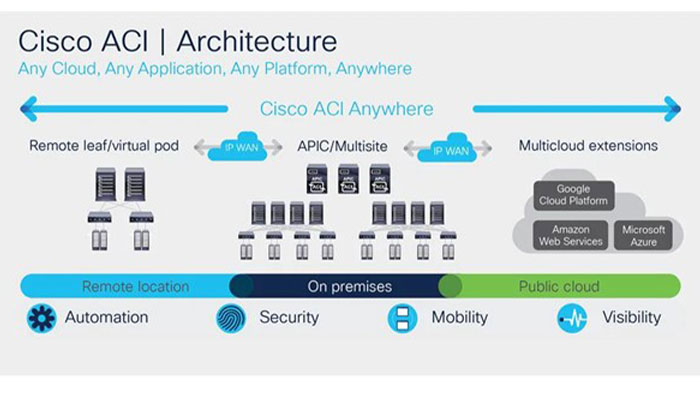In today’s digital age, networking is more critical than ever before. As organizations become increasingly reliant on applications and data, they need a network that is agile, scalable, and secure. Cisco ACI (Application Centric Infrastructure) is a next-generation networking solution that promises to deliver all of these benefits and more. In this article, we’ll explore the future of networking with Cisco ACI, and discuss how it can help organizations achieve their business goals.

The licensed Cisco ACI is a software-defined networking (SDN) solution that provides a centralized and automated approach to network management. Unlike traditional networking, where each device must be configured individually, Cisco ACI allows for the creation of policies that can be applied across the entire network. This approach reduces complexity and improves scalability, making it easier for organizations to manage their networks.
The Cisco ACI is an example of SDN, which is becoming increasingly popular in modern networking. SDN allows for the separation of the network’s control plane (which determines how data is forwarded) from the data plane (which handles the actual forwarding of data). This separation allows for more centralized control of the network, making it easier to manage and more flexible.
SDN also allows for more programmability, which can help to improve network performance. By using APIs and other programming interfaces, organizations can create custom applications and scripts that can automate network tasks and optimize network performance.
One of the main benefits of Cisco ACI is increased scalability. With traditional networking, adding new devices to the network can be a time-consuming and complex process. However, with Cisco ACI, new devices can be added quickly and easily, without the need for manual configuration. This makes it easier for organizations to scale their networks as their needs change.
Another benefit of Cisco ACI is increased security. By centralizing network management, Cisco ACI makes it easier to enforce security policies across the entire network. This can help to prevent unauthorized access and reduce the risk of data breaches.
In addition, Cisco ACI provides increased automation, which can help to reduce the workload of network administrators. With automated policies, network administrators can focus on more strategic tasks, such as optimizing network performance.
Cisco APIC is the brain of the ACI fabric. It allows you to define policies that specify how your applications and services should communicate and behave in the network. It also monitors the health and performance of the fabric and automatically adjusts the network configuration to meet your business intent.
Cisco AVS is a virtual switch that runs on the hypervisor hosts and connects the virtual machines to the ACI fabric. It supports advanced features such as micro segmentation, service insertion, and telemetry. It also integrates with Cisco APIC to provide consistent policy enforcement across physical and virtual workloads.
Cisco Nexus Dashboard Platform is a unified interface that simplifies the management of your data center and cloud networks. It enables you to configure, operate, and analyze everything connected to your ACI fabric, such as switches, firewalls, load balancers, containers, and cloud services. It also provides insights and recommendations to optimize your network performance and security.
Cisco ACI App Center is a platform that lets you customize and extend the functionality of your ACI fabric. You can use it to install applications that provide additional features or integrations with third-party vendors. You can also develop your own applications using the ACI APIs and SDKs and share them with other users.
Cisco ACI Multisite Orchestrator is a software application that helps you manage multiple ACI fabrics across different locations. You can use it to create global policies that apply to all your fabrics and ensure consistent network behavior across your sites. You can also use it to monitor the health and status of your multisite network and troubleshoot any issues.
There are many use cases for Cisco ACI, ranging from data center networking to edge networking. For example, organizations can use Cisco ACI to automate data center provisioning, reduce downtime, and improve security.

In addition, Cisco ACI can be used for cloud networking. By integrating with public and private cloud environments, organizations can create a hybrid cloud network that provides the scalability and flexibility of the cloud, while still maintaining the security and control of a private network.
Another area where Cisco ACI can help is in DevOps integration. DevOps is a set of practices that combines software development (Dev) and IT operations (Ops) to create a more agile and collaborative approach to software development. By integrating networking with DevOps processes, organizations can create a more streamlined approach to software development, where networking is an integral part of the process.
With Cisco ACI, organizations can use APIs and other programming interfaces to automate network tasks and integrate networking with other DevOps tools. This can help to reduce the time and effort required to deploy applications and improve the overall speed of software development.
Finally, Cisco ACI is being integrated with AI and ML capabilities, which can provide even more benefits. For example, AI and ML can be used to analyze network data and provide insights into network performance. This can help organizations identify potential issues before they become major problems, and optimize network performance based on usage patterns and other factors.
In addition, AI and ML can be used for network automation. By analyzing network data, AI and ML algorithms can make decisions about network configurations and automatically implement those changes. This can help to improve network performance and reduce the workload of network administrators.
Looking ahead, the future of networking with Cisco ACI looks bright. As organizations continue to rely more on applications and data, the need for agile, scalable, and secure networks will only continue to grow. The licensed Cisco ACI is well-positioned to meet these needs, with its centralized, automated, and programmable approach to network management.
In addition, as AI and ML capabilities are integrated with Cisco ACI, the potential for even more advanced network optimization and automation will only increase. This could lead to networks that are not just agile and scalable, but also intelligent and predictive, able to anticipate and respond to changes in real-time.
The licensed Cisco ACI represents the future of networking, with its centralized, automated, and programmable approach to network management. By providing increased scalability, security, and automation, Cisco ACI is helping organizations to optimize their networks and achieve their business goals. As AI and ML capabilities are integrated with Cisco ACI, the potential for even more advanced network optimization and automation will only increase, creating networks that are not just agile and scalable, but also intelligent and predictive.